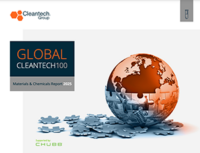Lithium: The Material Fueling The EV Revolution
Lithium and its compounds are used in numerous industrial applications, from ceramics to glass. Demand for lithium is forecast to grow strongly in the coming decade, driven mostly by demand for lithium-based batteries needed to power electric vehicles (EVs). Due to the unique properties of lithium and lack of alternatives, demand from EVs is unlikely to subside any time soon.
Recognizing increasing demand, miners have raised money to expand production of lithium, including.
- Lithium Americas raised $400 million in January
- Albemarle raised $1.3 billion in February
- Piedmont Lithium raised $122 million in March
Despite the recent investments, lithium production is not increasing fast enough to meet demand of the EV market and, based on current projections, lithium demand is set to outpace supply by 2027/28. Concerned with the supply of lithium, EV makers are making moves to safeguard this critical resource. In September 2020, Tesla secured rights to 10,000 acres in Nevada where it aims to produce lithium from clay deposits. Meanwhile, BMW agreed a $345 million contract for Livent to supply lithium directly to the BMW Group’s battery cell manufacturers from 2022.
Current Lithium production faces economic and environmental challenges
The current main sources of lithium are hard rock deposits and salar brines (salt lake deposits). There are also lithium clay deposits and ‘unconventional’ geothermal and oilfield brines which have been technically difficult to exploit. Price instability of precious metals makes lithium investments a risky business, especially because new production facilities can take 5-10 years to reach commercial production. Lithium processing through conventional approaches such as evaporation ponds is quite time consuming and inefficient, and often results in less than 50% of the available lithium being extracted. There are other challenges associated with lithium extraction including land use change, pollution, and high-water usage. Further, conventional processing technologies produce lithium carbonate which requires additional processing into lithium hydroxide to meet demand for production of much of the most in-demand nickel rich batter chemistries.
Interested in more insight into how Materials & Chemicals will help us take action to build a cleaner world?
New extraction and refining technologies are set to increase production
New innovations using sorbents, electrochemical, membrane and ion exchange technology are being commercialized which enable faster, more efficient, and more cost-effective processing. Further, difficult to exploit ‘unconventional’ brines are now coming into focus as technologies advance.
Summit Nanotech uses lithium selective nanomaterials to isolate lithium ions from dissolved clay, groundwater brine, recycled battery materials and oilfield brines. The first iteration of the technology “denaLi C” uses a sorbent-based process which recovers lithium from brine to produce 99% pure lithium carbonate. The energy-efficient process uses no freshwater, produces less waste, and doubles lithium yield. A second iteration of the technology “denaLi H” uses a ‘hydroxylation’ process to directly produce lithium hydroxide from solution. Amanda Hall, CEO and Founder of Summit Nanotech explained, “the different technology approaches give customers the flexibility to extract lithium in the form that is most suitable for their resource composition.” Summit plans to offer both solutions to their customers through a ‘hardware as a service’ model and will be conducting pilot trials Q4 2021 with several leading miners. Summit raised a $1.5 million seed round in March 2020 and is currently raising a $10 million Series A round to fund demonstration projects in 2022.

Mangrove Lithium has developed a modular electrochemical platform for the cost-effective production of battery-grade lithium hydroxide from waste brines, desalinated water or hard rock. Mangrove’s flexible platform allows for processing of variety of feedstock including lithium chloride and lithium sulphate into lithium hydroxide. Formerly known as Mangrove Water Technologies, the company refocused on lithium hydroxide production as demand for battery grade lithium increased. Mangrove plans to commercialize the technology by 2022 under a leasing model where Mangrove will own and finance the tech. Mangrove recently raised a $3 million round in February 2021 from BDC Capital and is currently raising another $10 million round to support commercial deployment of the technology in 2022.
EnergyX’s Lithium-Ion Transport and Separation (LiTAS) is based on application of metal organic frameworks (MOFs) for selectively separating monovalent ions, such as lithium, from the rest of the ions in mixtures of high salinity solutions. The first-generation technology replaces lithium precipitation in salar evaporation ponds, increasing lithium recovery rates to 90%. A planned 2nd generation technology eliminates all precipitation ponds and a 3rd generation will enable production of lithium hydroxide without an intermediate lithium carbonate production step. EnergyX is testing brine from lithium producer, Orocobre, and will soon begin testing its lithium extraction technology in the field targeting the end of 2022/2023 for large scale commercial production. Revenue will ultimately be realized through a combination of technology fees and sales of equipment in collaboration with Suez. EnergyX completed a $20 million Series A round in May 2021 and is in discussions for a potential Series B funding round.
Several other innovators are also targeting lithium production.
- Lilac Solutions raised a $20 million Series A round in February 2020 to scale up production of its ion exchange beads technology and to support global deployment
- Geo40, formerly focused on extraction of silica from geothermal brine, is now also targeting extraction of lithium. The company announced success in extracting battery-grade lithium from geothermal brine in September 2020. Geo40 raised $20 million in a Series A round in September 2020
- LiEP Energy began a pilot project with Praire Lithium in June 2020 to use its proprietary electro-chemical refining process to produce battery-grade lithium hydroxide
Keep an eye out for…
As the demand for lithium has come into focus, so has exploration of alternative sources. Battery recyclers are attracting large amounts venture capital including Li-cycle, which filed to go public via merger with a special purpose acquisition company earlier this year. Lithium recovery from battery recycling continues to improve and lithium from recycling of critical materials from EOL batteries will become increasingly large part of the market.
Ultimately, lithium stocks are under less pressure than other critical battery materials such as cobalt or even nickel, but continued innovation and scaling of technologies is critical to expanding production to meet demand and to mitigate against environmental impacts lithium mining.



